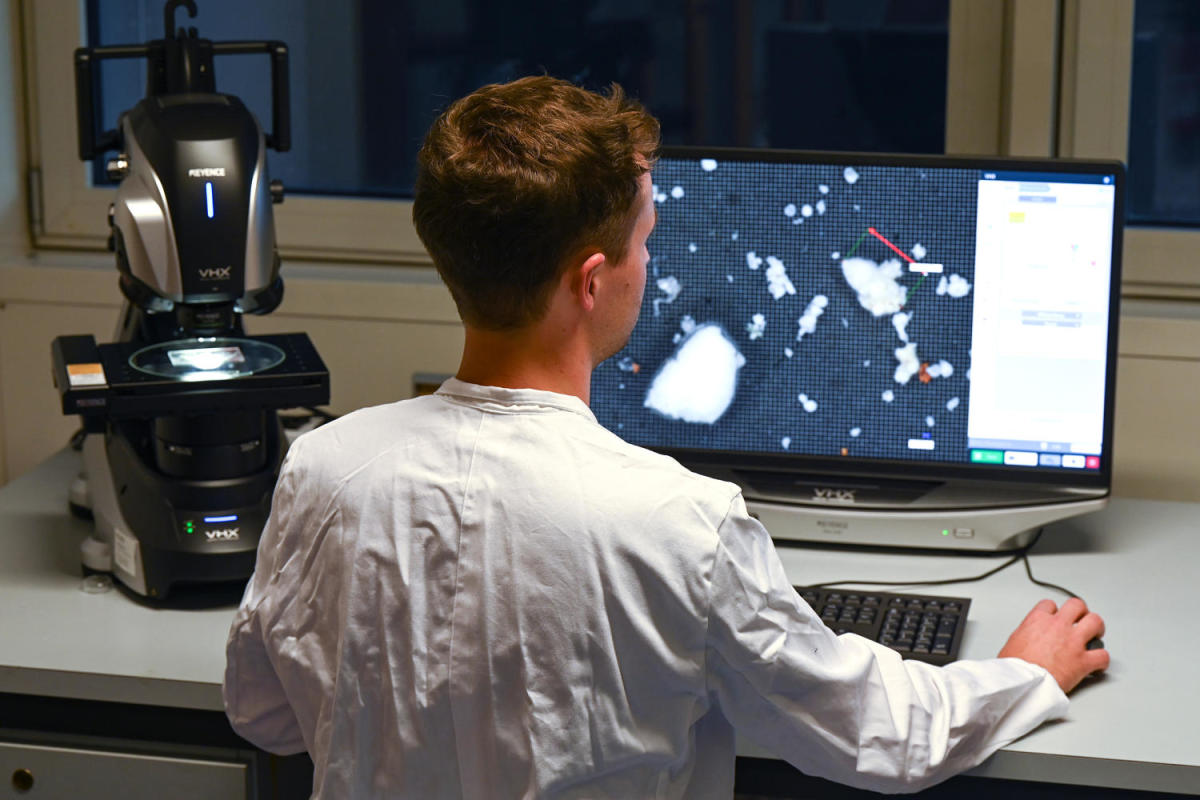People with microplastics and nanoplastics in plaque lining a major blood vessel in their neck may have a higher risk of heart attack, stroke or death, new research suggests.
The findings, published Wednesday in The New England Journal of Medicine, are the first time scientists have linked these tiny plastic particles, the result of degraded plastic pollution, to cardiovascular disease.
Microplastics are defined as particles smaller than 5 millimeters, and nanoplastics are far smaller — so tiny that they can be seen only with specialized microscopes. In recent years, their ubiquity has become undeniable: They have been found in fresh snowfall in Antarctica and at the depths of the Marianas Trench, as well as in human blood; breast milk; urine; and placental, lung and liver tissue.
Dr. Raffaele Marfella — a cardiology researcher in the University of Campania Luigi Vanvitelli’s department of advanced medical and surgical sciences in Naples, Italy, and the lead author of the new study — said that he and his colleagues initiated the study to look for new risk factors for cardiovascular disease.
They knew of the enormous amount of degraded plastic pollution contaminating the planet and wondered “whether plastic, in the form of micro- or nanoplastics, could also degrade our arteries,” Marfella said in an email. People can inhale and ingest the plastic particles. The plastic can also enter the body through skin.
A blue rectangular piece of microplastic on the finger of a researcher in Tacoma, Washington. (Ted S. Warren / AP file )
To study the effects, they turned to a group of patients already scheduled to undergo surgery for a condition called carotid artery stenosis, in which plaque, or fatty deposits, blocks normal blood flow. The body’s two carotid arteries supply blood to the brain, face and neck. The researchers looked at plaque removed from 257 patients and tracked the patients’ health for an average of 34 months following the surgery.
They found plastic particles — mostly nanoplastics — in the plaque of 150 patients. At follow-up, nonfatal heart attack, nonfatal stroke or death from any cause occurred in 20% of those patients and in 7.5% of the patients without detectable plastic particles.
After adjusting for age, sex, body mass index and health conditions such as diabetes and abnormal cholesterol, the patients with detectable levels of plastics had “nearly a five times greater risk of a cardiovascular event” than the other patients, Marfella said.
Numerous experimental studies on cells and in animals have shown that the presence of these plastic particles increases diseases. One study published online in February in the Journal of Hazardous Materials found microplastics, for the first time, in human arteries.
Previous studies finding the tiny particles in human tissue were “pioneering,” said Dick Vethaak, a biologist and toxicologist at Utrecht University’s Institute for Risk Assessment Sciences and coordinator of the Dutch Microplastics and Human Health Consortium, but this study “is the first of its kind.”
“It is the first one that looked at a large number of donors in so much detail” and the first to follow patients for years to track their health, said Vethaak, who wasn’t involved with the new study.
However, this kind of observational study can show only an association between the plastic particles and heart attack, stroke or death. It cannot show that they caused these cardiovascular events. For that, researchers would need to conduct a randomized, controlled trial, but it would be unethical to intentionally expose people to potential toxins.
Nevertheless, the study offers some hints about the relationship between the presence of micro- and nanoplastics and heart disease, said Dr. Martha Gulati, director of preventive cardiology in the Smidt Heart Institute at Cedars-Sinai in Los Angeles.
“We know that cardiovascular disease, particularly myocardial infarction, is usually triggered by an inflammatory response,” Gulati said, using another term for heart attack. The Italian researchers measured markers for inflammation in patients and found that those markers increased as the level of plastics in the plaque rose.
Still, “is the inflammation due to the nanoplastics or something else?” Gulati asked.
Because the study was carried out in a very specific group of patients, the results cannot be applied to the broader population. But it could pave the way for future studies.
“This paper might provoke people to figure out if we can measure micro- and nanoplastics in the general population and then examine who goes on to develop cardiac events,” Gulati said.
Vethaak said similar studies are in the pipeline for other kinds of human tissue.
The researchers also noted the possibility that the plaque samples could have been contaminated in the lab.
“Future studies performed with the use of clean rooms, where there is no plastic in any form except the material under study, might corroborate our observations,” they wrote in the paper.
“I hope that this study, and more work that it triggers, helps us address our environment and cardiovascular health because I feel like this is something that really needs to be discussed,” Gulati said. “It gets very little attention.”
This article was originally published on NBCNews.com
